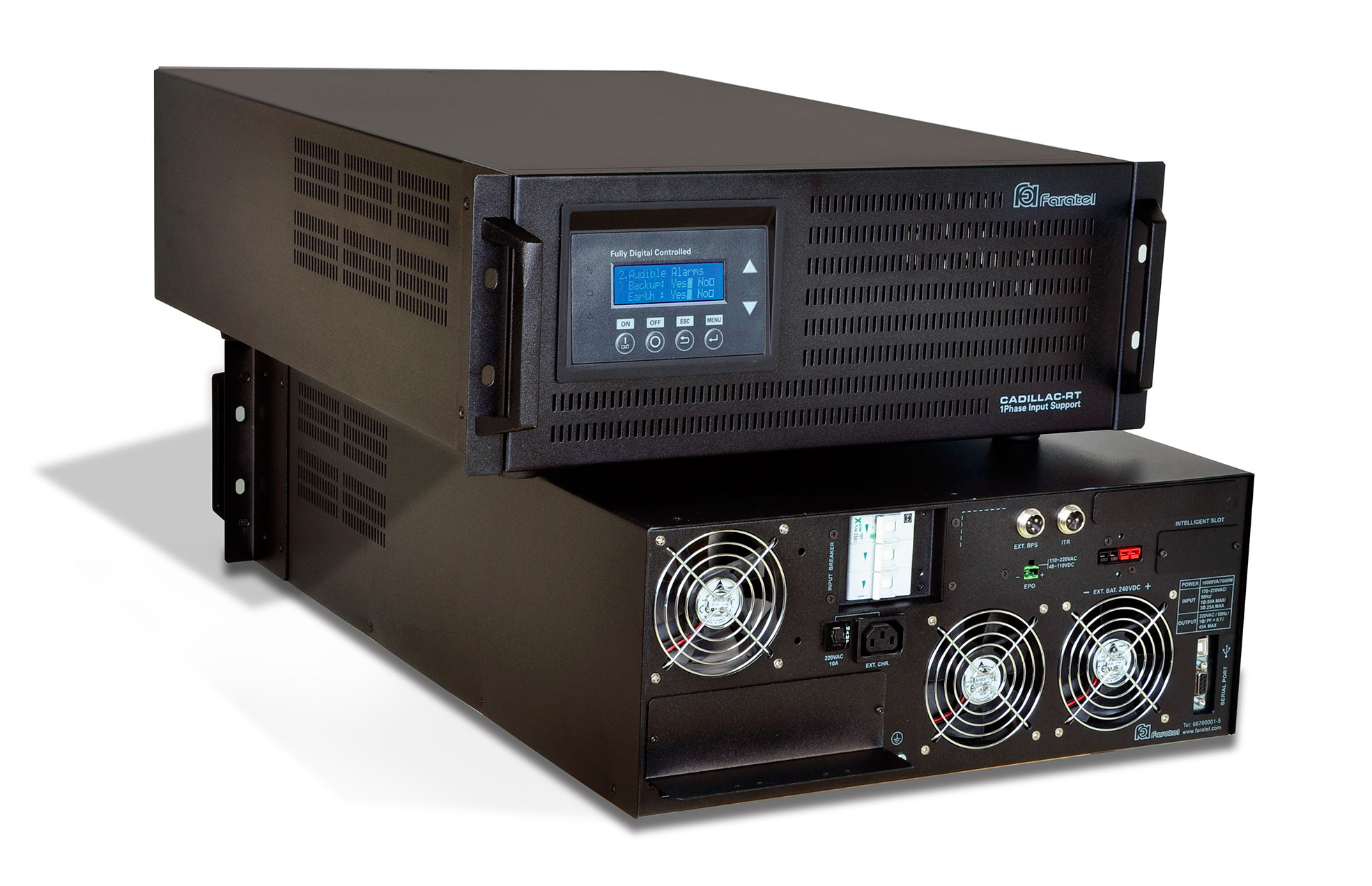

The word UPS comes from the phrase Uninterruptible power supply and means uninterruptible power supply. UPS is an electronic power supply whose task is to provide uninterrupted supply of sensitive, electronic, and telecommunication devices against power outages or electrical fluctuations. This system is placed between the consumer electrical device and the municipal electricity, and according to the electricity regulation of the grid, It prevents the penetration of network fluctuations and disturbances into the consumer's sensitive tools and equipment, and also provides and protects the electricity required by consumer equipment such as servers and computers that are exposed to these electrical fluctuations by using the electricity stored in the UPS battery, and also provides the required power of these equipment in the event of a power outage.
When power fluctuates suddenly, the UPS system prevents damage to electronic systems and protects them from voltage changes and power outages. The primary purpose of a UPS machine is to provide an uninterrupted source of energy for the equipment it protects.
Automated testing and testing are also used to ensure that the UPS is operating properly. This test is done during the first UPS connection to the mains, and after that, the test is done at specific intervals.
Inside small UPS, there is a battery that charges it when there is electricity in a normal state, and in the event of a power outage or a drop in power supply, when the voltage falls below a certain value, the UPS system automatically transfers the power supply of the computer from the city electricity to its output in a period of about 1 to 2 milliseconds. The computer system or server does not notice the interruption of the electrical current and continues to work. A UPS consists of four main parts:
1. Battery rectifier and charger (AC to DC converter)
2. Battery
3. DC to AC converter (inverter)
4. Keys (bypass key, disconnect and connect keys)
UPS work in the simplest way in such a way that the load is fed from the AC input in normal mode, and at the same time the charger charges the battery by adjusting the AC input power and converting it to DC power, and as soon as the AC input power is cut off or its quality is detected by the UPS to be inappropriate, the inverter immediately converts the DC voltage of the battery to AC power. It provides the required power of the load without interruption. In the past years, UPS was thought of as an expensive system, but now, due to the high price of equipment in terms of hardware and the importance of having information and data, the preparation and supply of UPS devices is quite cheap and cost-effective. The use of a backup energy source such as a UPS power supply system also provides protection against a total power outage, as it helps to solve problems caused by sudden power outages.UPS has electronic filters that eliminate noise and electrical fluctuations in the urban system, as well as protect consumer devices from lightning and high voltages, and sends a uniform electric current with a constant waveform to consumer devices.
UPS are available in different models and sizes. The unit of measurement is UPS, power, or VA (product of voltage multiplied by output current). The more powerful the inverter of a UPS device, the more power and power of the UPS, and also the higher the capacity of the batteries used in the UPS, the longer the power transmission time during a power outage.
Different UPS have a variety of features such as alarms when errors or overloads occur, computer control software to store information and shut down the computer, and other features. Once you have installed the UPS software, you can program the software according to your needs. And you can also use them with the default settings.
 aa
aa

 Order tracking
Order tracking Service request
Service request Karaj Golshahr, Eastern Villa, Parveen St., Shahadai Daeshamaz Blvd., No.-78
Karaj Golshahr, Eastern Villa, Parveen St., Shahadai Daeshamaz Blvd., No.-78





